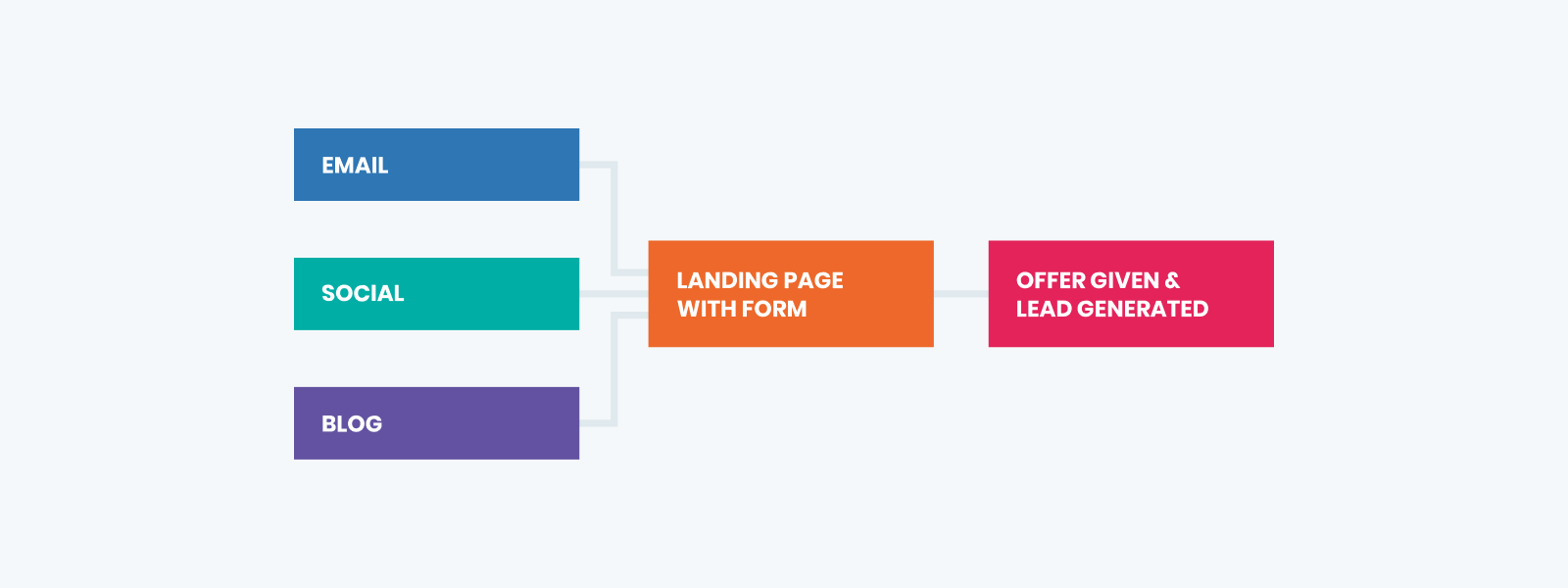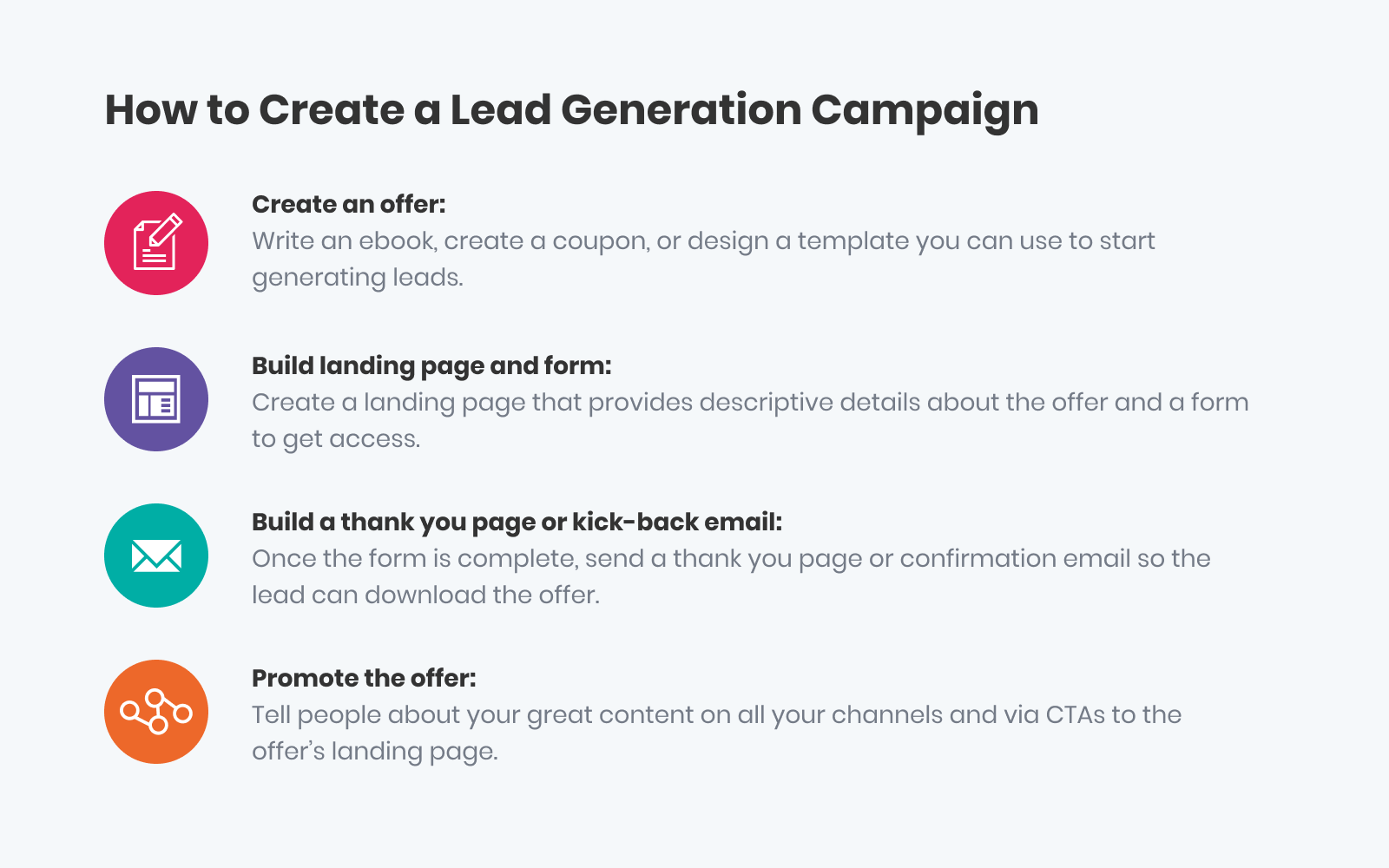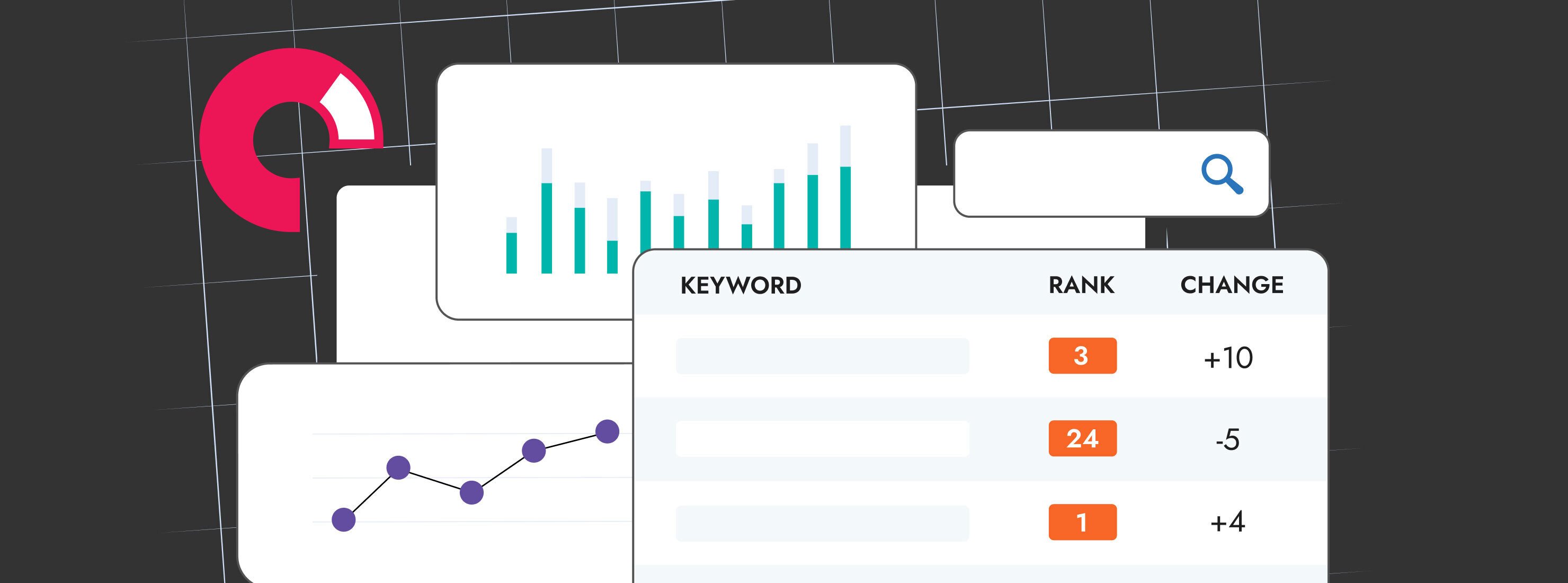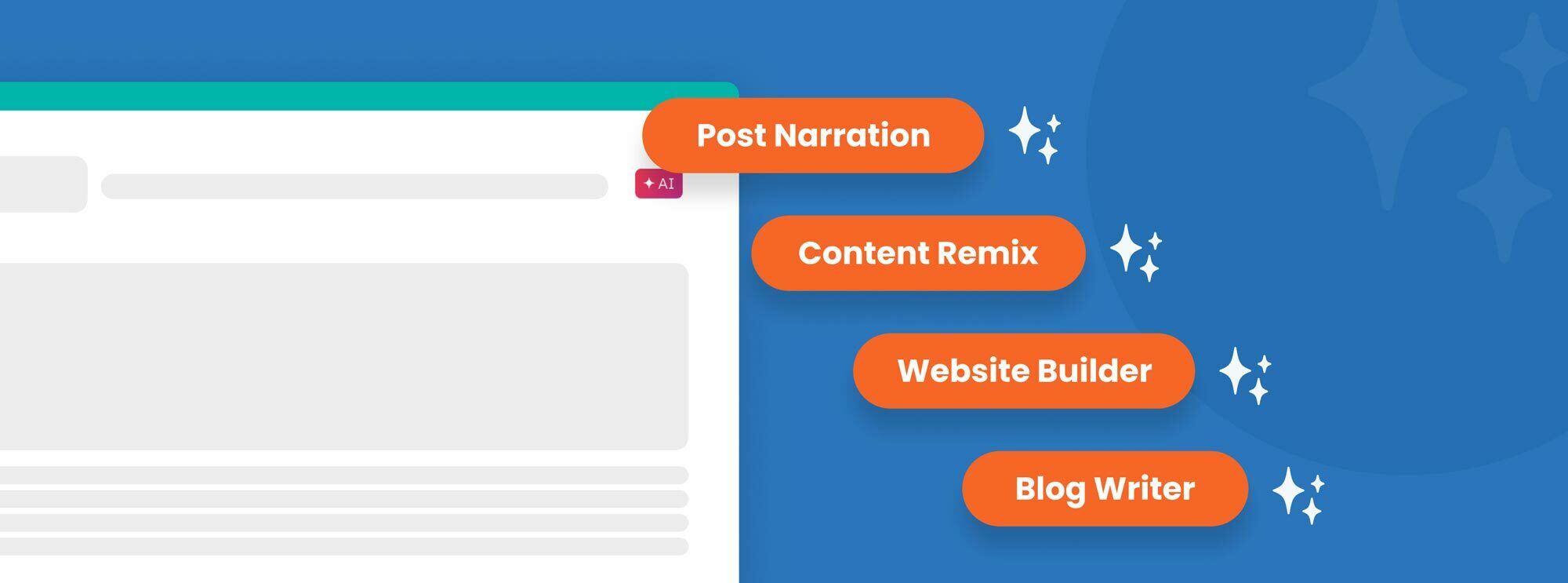Your company wants to generate more leads. You’ve spent a little on advertising to try to get them, but these efforts haven’t yielded the lead generation results you were looking for.
We hear this all the time.
Consumers today are incredibly savvy and don’t like feeling they are being sold to. Online information empowers them to work around advertisers and learn about products and services on their own terms. This new marketing landscape has forced companies to look at smarter, less invasive methods to entice consumers. That’s why your lead generation efforts should include inbound marketing methods and strategies.
If you allow me to get Zen for a minute, there’s a Buddhist tenet that goes something like this: only by stepping out of the way and letting things happen will you finally realize your destiny. So what does this have to do with marketing? As you develop your marketing strategy, don’t rely solely on traditional outbound marketing tactics—trying to make things happen with cold calls, pop-up ads, direct mail, and TV commercials. Instead, try “letting things happen” by creating an online presence that lets you get found by new prospects when and where they are looking for the solution you provide.
OK, I know what you’re thinking. “Letting things happen” is not a marketing strategy and certainly won’t look good on a quarterly report. “Letting things happen” doesn’t mean do nothing. It’s about helping, not selling. Let us show you how to do lead generation the inbound marketing way.
Table of contents
- What is an inbound lead?
- Lead generation with inbound marketing
- Inbound marketing methods for lead generation
- Inbound marketing lead generation to lead capture
- Capturing leads for inbound marketing
- How to create a lead generation campaign
- Identifying qualified leads with lead scoring
- How to nurture an inbound lead
- Tools you can use
What is an inbound lead?
An inbound lead is someone who has approached your company because they found you while searching online, read one of your blog posts, or saw a review online that said you were the best in the biz. They’ve sought you out because of the helpful information your organization provided.
Inbound lead generation relies on the use of SEO and great content to draw prospects to your company. Unlike traditional outbound lead generation that uses interruptive methods like cold calls and radio ads, inbound lead generation allows the prospect to decide when and how they will interact with your company.
In this post, I talk a lot about the sales funnel, but it’s important to note that inbound marketing methods aren’t focused on the funnel, but the flywheel.

The concept of the flywheel, popularized by marketing and sales software company HubSpot, is that reducing friction and generating momentum for your products will help propel your company to the next level. It starts with creating content that attracts leads, engaging them with the information they are looking for, and delighting them enough with your service or product to create a brand ambassador who makes attracting new leads that much easier.
Lead generation with inbound marketing
To effectively attract leads using inbound marketing, you must have a firm understanding of your customer base and who exactly benefits from your products or services. Identify where your ideal customers are located, their age range, their income, where they get their information, and what problems they need solved. A good way to do this is to create buyer personas, semi-fictional representations of your ideal customers based on market research and what you already know about your existing customers.

Here’s why buyer personas work:
- Knowing your ideal customer, their common questions, and challenges help you create relevant content you can place on the channels they use the most.
- Showing these consumers you have something valuable to offer them, in the form of the content, will get their attention, build trust, and establish a relationship.
- By being a resource for these consumers, you will be more effective at reaching people earlier in the buying process, and ultimately influencing their purchase.
Once you’ve developed your buyer personas, keep them handy. They’re something you should reference throughout you lead-gen process to ensure you’re staying on target.
Inbound marketing methods for lead generation
Companies use a wide range of tactics to draw people to their site and build trust. But knowing which tactics work best for which customer can get complicated. Here are the inbound marketing lead generation essentials.
SEO for lead generation
You’ve probably heard this advice a million times—optimize your website for search. Maybe your company has done it’s own keyword research, or hired an SEO consultant to improve your rankings. SEO is one of those areas where you can dive very deep into analyzing page speed, structuring URLs, and mastering internal linking practices. These tools can do wonders for your search rankings, but the high-level tech talk can scare off a lot of marketers.
The thing is, by making a few basic changes to your site both on the page and behind the scenes, you can make a big difference in search rankings. Here’s how to get started:
Step 1. Keyword research
Keywords are the guide to your target audience. By understanding how people are searching for products and services like yours, you can add those search terms to your website in different ways, increasing its chance of getting found.
Step 2: On-page optimization
Once you have a set of keywords you would like to rank for, it’s time to add them to your website and blog content. Select one keyword for each page and include it in:
- The title
- Once prominently at the top of the page
- At least two or three times, including variations, in the body copy
- At least once in a page subheading
Step 3: Behind-the-scenes optimization
SEO works because search engine crawlers see keywords on your site (and others) and use that data to deliver relevant results. Keywords in your behind-the-scenes content—in the HTML code but not seen by the user on the web page—is also used by crawlers. If you and your team use WordPress or another content management system for your website, you have the ability to add keywords in places like:
- Title tag
- URL
- Meta description
- Image alt text
Step 4: Don’t force it
The keywords should fit in your headlines and body copy effortlessly. The top priority should always be helping your client. Remember, let it happen, don’t make it happen. In the case of title tags and meta descriptions, users are going to use these to decide if you’re content is relevant to them, so put your best copywriting hat on when writing them.
Read more about lead generation with SEO: How to Master Search Engine Optimization (SEO): Choose Your Keywords Wisely
Inbound marketing content for lead generation
When it comes to content, the focus should be on your customers and the people you want to attract. The goal is to be helpful, guiding users through the site and enticing them to take action. Content should always be written with SEO in mind, whether it is your company’s home page, a landing page, or the 476th blog post.
Once your site has been built, companies use their blog to keep generating content, improving SEO, and spreading the word about what they do. A blog is a vehicle for delivering valuable content to your target audience and to more effectively use SEO to attract leads.
A blog should generally be:
- A place to develop and share useful, original content
- Optimized for the keywords and concepts you want to be found for
- Updated on a weekly basis
- Relevant to your industry and/or brand
- Well-written, insightful, and (if that’s your brand) fun
The content created for a blog can also be leveraged to further draw in leads by providing content for your social media channels, email newsletter, and as resources for your sales team.
Having great content won’t generate leads by itself. Each blog post needs a call-to-action encouraging the consumer to get more information or a tool. It should also include a form to gather their information so you can continue to nurture them along the buyer’s journey. When drafting your CTAs, be direct about what you’re asking. If the CTA mentions a benefit, it’s an added bonus.
Read more about lead generation with content: Call-to-Action: Help Web Visitors Take the Next Step
Get more leads with video
I’m a writer, so when I think of content, my mind automatically goes to the words on a page, but content can be so, so much more. Infographics, photo galleries, videos, podcasts, and interactive maps are all valuable content that can convert viewers into leads. Take video, a rapidly growing form of content for online marketers.
According to a study by Cisco, 90% of consumers said they were better able to make purchasing decisions when they saw a product video, and that adding video to landing pages increased conversions by 80%.
These stats show how perfectly suited video is for inbound lead generation. Video—which allows you to see and hear the product with your own eyes and ears—provides a means for marketers to build trust with a customer that the product or service is the real deal.
Learn more about lead generation with video marketing: How to Use Video as a Lead Generation Tool
Inbound marketing lead generation to lead capture
All the great content in the world won’t help you land more leads if you don’t have a clear strategy for capturing them. In a perfect world, here’s how inbound lead generation is supposed to work:

Here you see the direct line from the different forms of content to the landing page to someone giving over contact information and transitioning into a lead. You’ve likely heard of content being referred to as lead magnets, and for good reason. White papers, ebooks, newsletters, guides, tipsheets—companies are using all of these tools and more to attract leads and capture their information. To effectively capture leads, however, it’s important to understand what makes a good lead magnet.
Lead magnets
Lead magnets are essentially content offers accessed by prospective customers by entering in a bit of personal information. This content must offer enough value to make the consumer feel it’s worth handing over their personal information, since this trade comes with the expectation they will be contacted (usually by email) at a later date. This gated content can be a webinar showing users how to use a software tool. It can also be a how-to guide, a template to keep you organized or as simple as a discount code.
Whatever the offer, it must be valuable enough to convince people it’s worth handing over their personal information to get it.
Here are some other common lead magnets:
- Training video series
- Free trial
- Webinars
- ebooks
- Coupons
- A set of bonus tips
- Consultation
Promoting your content offers
A vastly overlooked part of gated content is the importance of promoting it. Often, companies spend hours creating a cool ebook or guide, post it behind the gate, send an email and social media blast about it, and then move on to the next project. Promotion can be done using the following tools:
- On your company’s website
- Landing pages
- On the company’s blog
- Social media
- Digital advertising
The landing page and all other promotional content for the lead magnet must convey the value. Sure, you know how great it is, but no one else does. Let people know not only what it is (Awesome Guide to Mastering Social Media) but also how it helps them achieve results (Learn how to set up a Facebook Ad that gets the most out of your budget).
Learn more about lead generation with lead magnets: How to Make a (Content) Offer Potential Customers Can’t Refuse
Capturing leads for inbound marketing
You’ve written some great optimized content, compelling CTAs, and a killer how-to guide content offer. Now what?
You need some forms.
The form may live on a landing page, at the bottom of a blog post, or a pop-up on the home page. No matter where it lives, it’s important to write a form that asks for just the right amount of information.
You need to collect enough information to determine whether a person has an interest in your products and services, but knowing how much information is enough depends on your type of business.
As you build the form, start with name, email address, and role/interests. By identifying what the lead is interested in buying, or the lead’s role at his or her company, you can attach the lead to one of your buyer personas in your customer relationship management (CRM) system. Having this form field allows you to better nurture your leads with content most relevant to them.
Each form will depend on the the content offer you are providing. Is it a top-of-funnel guide? Then try requiring fewer fields. Data show the more form fields you have, the less conversions you’ll get. If it’s a bottom-of-funnel webinar with in-depth tips and tricks, try asking for more qualifying details. With progressive profiling available within CRM systems like HubSpot and Marketo, you can create forms that prompt a visitor to fill out only certain information on the first download. Then the next time that visitor fills out a form, cookie tracking allows you to replace any of the form fields you’ve already collected from the contact with new form fields.
Learn more about capturing leads with forms: Use Forms to Capture Leads Like You Read About (By Reading About Capturing Leads Here, Ahem)
How to create a lead generation campaign
Now that we’ve covered the basics of lead generation the inbound marketing way, let’s get to building a campaign.

Identifying qualified leads and lead scoring
Now that your inbound marketing lead generation campaign is gathering contacts through your form, it’s time to determine which have the potential to become customers. Let’s be honest. Not every person who downloads your ebook is going to become a customer. But knowing how to identify those that might become one will help make your marketing efforts more efficient.
What is the level of interest?
Qualifying a lead depends greatly on you knowing a bit about them. For example, if the person who downloaded your ebook on rooftop solar panels is a college student doing research for a paper, the level of interest in buying is low. However, if the person who downloaded the ebook is a homeowner, you can assume there is a reasonable level of interest there.
Different types of content bring with them different interest levels. When someone signs up for a retailer’s newsletter, they are interested in the company and upcoming sales, but this doesn’t tell you much about whether they plan to buy this week or in two months. Downloading a coupon code is a good indication the lead is not only interested in your company, but also plans to purchase your product before the coupon expires.
To qualify leads, ask qualifying questions relevant to your business and industry to help identify those who have the highest level of interest.
Lead scoring for inbound marketing

Gauging a lead’s level of interest has some nuance. It’s not always going to be “interested” or “not interested.” There are leads who want to buy soon, and leads who are still doing research, and leads who may buy a year from now.
To better categorize leads, some marketers use lead scoring. It qualifies leads quantitatively by assigning them a numerical score that places them on a scale from “interested” to “ready for a sale”. The higher the lead’s score, the closer they are to a sale.
Businesses can set their own criteria for these actions, which should be uniform across the marketing and sales department. Typically it is based on actions they’ve taken, information provided, engagement with your brand, and any other criteria you choose. Some tools, like HubSpot Lead Scoring and Infer have predictive lead scoring based on the actions leads have taken, and it can give you intelligence on what campaigns and content offers are generating the best leads.
Learn more about inbound marketing lead scoring: Grading: the Key to Lead Scoring in Inbound Marketing
How to nurture an inbound lead
92% of consumers don’t make a purchase when they visit a brand’s website for the first time.
You have your lead’s contact information, interest level, and score. Now it’s time to nurture that lead.
Think of the lead like a houseplant. You can put it in the corner and water it every three months, but it’s probably not going to thrive. Put the plant near a sunny window, water it daily and give it food, and the plant will blossom into something beautiful. Too often, companies get a lead, do the initial follow-up work, and then stick the lead in a corner. That lead needs long-term nurturing from email, promotions, and other content, depending on their buyer personas and where they are on the buyer’s journey.
- Gather those common questions from leads and the content you developed to answer those questions.
- Examine how this content answers questions along the buyer’s journey.
- Look at where your company is lagging in terms of delivering content your leads are looking for.
For example, if most of your content focuses on comparing your products to lead competitors, that’s great bottom-of-the-funnel content, but you may need more content to get leads to that point in the decision-making process. According to AdWeek, 81% of shoppers do online research before buying. Including information that aids in that research process will ultimately benefit your company by building consumer trust.
Here are some content ideas for each stage of the buyer’s journey/funnel:
Top-of-funnel/awareness stage
- White paper
- Ebook
- Template
- Guide
- Tip sheet
- Checklist
- How-to video
Middle-of-funnel/consideration
- Product webinar
- Case study
- Sample
- FAQs
- Demo video
Bottom-of-funnel/decision
- Free trial
- Live demo
- Consultation
- Coupon
- Free estimate
Using your CRM, you can serve these pieces of content to the right lead at the right time. For example, if you have a case study targeted at a certain buyer persona, you can use your CRM and lead scoring data to create an email list of all leads who self-identified as that persona in the consideration phase to serve them the piece of content most relevant to them.
Tools you can use
Of course, if you want to run highly-targeted campaigns like this, you need a good marketing automation tool that connects your CRM, email, blog posts, social media, etc. Like we noted above, we’re partial to HubSpot, but we have experience working with clients on a whole range of tools and integrations. What we’ve seen is that companies that use their tools to the fullest potential will see the greatest benefit.





